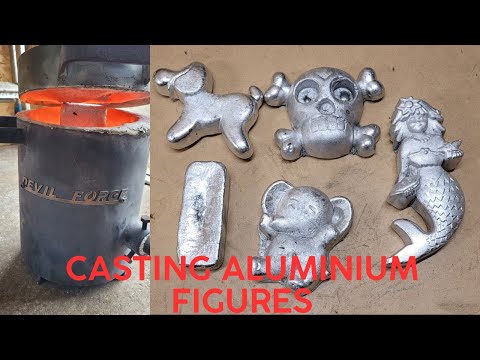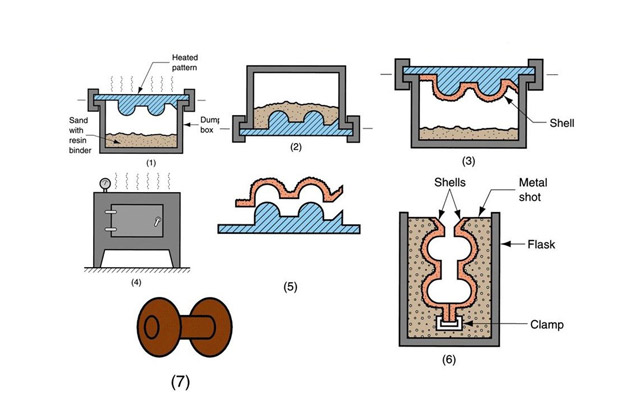Examine This Report on Stahl Specialty Company
Table of ContentsExamine This Report on Stahl Specialty CompanyThe Greatest Guide To Stahl Specialty CompanyThe Greatest Guide To Stahl Specialty CompanyNot known Details About Stahl Specialty Company Rumored Buzz on Stahl Specialty Company
There are lots of small distinctions between wrought and cast aluminum alloys, such as that cast alloys can have extra substantial amounts of various other metals than functioned alloys. The most remarkable distinction in between these alloys is the manufacture procedure with which they will certainly go to supply the last item. Other than some surface area treatments, cast alloys will exit their mold and mildew in almost the specific strong type preferred, whereas wrought alloys will certainly undergo several alterations while in their strong state.If you think that a functioned alloy may be the best for your task, have a look at some of our articles that clarify even more about details wrought alloys, such as Alloy 6061 and Alloy 6063. On the other hand, if you assume a cast alloy would be much better for you, you can discover more about some actors alloys in our Alloy 380 and Alloy 383 posts (coming soon).

Having the experience and market expertise to engineer your spreadings for optimum manufacturing and high quality results will simplify the project. Producing light weight aluminum castings calls for a complex set of processes to accomplish the appropriate outcomes. When choosing a new aluminum foundry to partner with, ensure they have extensive industry experience and are knowledgeable about all aspects of the light weight aluminum spreading procedure: layout, manufacturing, material analysis, and product screening.
The Ultimate Guide To Stahl Specialty Company
The shop must likewise have a proven track record of supplying exceptional products that fulfill or go beyond consumer assumptions. Quality assurance must also go to the top of your checklist when selecting an aluminum foundry. By functioning with a qualified foundry that follows the requirements for high quality control, you can secure the stability of your product and ensure it meets your specifications.
By selecting a firm that uses solutions that fulfill or surpass your product demands, you can be sure that your job will certainly be completed with miraculous precision and efficiency. Specific light weight aluminum factories focus on particular kinds of making procedures or casting methods. Different components require different manufacturing strategies to cast aluminum, such as see here now sand casting or pass away casting.

Die spreading is the name given to the procedure of creating complex metal components through use of molds of the component, also understood as passes away. It generates even more components than any other process, with a high degree of accuracy and repeatability. There are three sub-processes that fall under the classification of die casting: gravity pass away spreading (or irreversible mold and mildew spreading), low-pressure die spreading and high-pressure die casting.
Despite the sub-process, the die spreading process can be broken down right into 6 actions. After the purity of the alloy is checked, dies are created. To prepare the passes away for spreading, it is very important that the passes away are clean, to ensure that no deposit from previous manufacturings stay. After cleaning, the ejection lubrication is related to the die to guarantee a smooth release.
The pure metal, also referred to as ingot, is included in the furnace and maintained at the molten temperature level of the steel, which is then moved to the shot chamber and injected right into the die. The stress is then maintained as the steel solidifies - aluminum foundry. Once the steel strengthens, the cooling process starts
The thicker the wall of the component, the longer the cooling time due to the quantity of interior steel that likewise needs to cool down. After the element is fully cooled, the die cuts in half open and an ejection device pushes the part out. Following the ejection, the die is closed for the following injection cycle.
Stahl Specialty Company Things To Know Before You Buy

This confirmed to be an incorrect test, due to the fact that the tester might cut right into a piece and miss a location with porosity. Today, leading suppliers make use of x-ray screening to see the entire inside of components without cutting right into them. This permits them to much more precisely approve or turn down components. To get to the ended up item, there are 3 main alloys used as die spreading material to select from: zinc, light weight aluminum and magnesium.
Zinc is one of the most secondhand alloys for die spreading due to its reduced expense of raw products. Its corrosion resistance likewise allows the parts to be long lasting, and it is one of the a lot more castable alloys due to its lower melting factor - Aluminum Castings.
The Stahl Specialty Company Diaries
As stated, this alloy is one of the most typically made use of, yet makes will, sometimes, select light weight aluminum over zinc due to aluminum's manufacturing advantages. Aluminum is highly cost-effective and among the much more flexible alloys. Aluminum is made use of for a variety of various items and industries anything from window frames to aerospace materials.